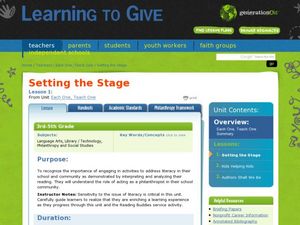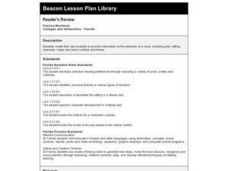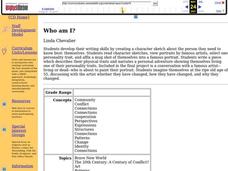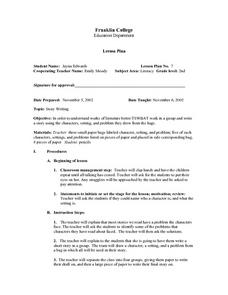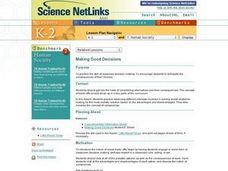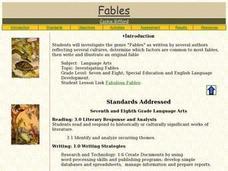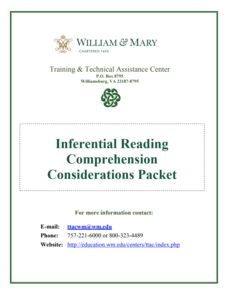Curated OER
Macbeth - Analyzing Characterization in Drama
The writing activity in this lesson could be used to assess student understanding of previously taught concepts of how language reveals character.
Curated OER
Expressions of Anti-Racism through Painting: The Puerto Rican Community from West Side Story to Connecticut
Students create a graffiti wall using their own name or personal symbol. They examine their own understanding of the film as a source of inspiration and listen to the music from the soundtrack as an effective motivation. They make...
Curated OER
Setting the Stage
Students investigate the importance of literacy to philanthropy. In this literacy lesson, students read the book, Amber on the Mountain, before answering questions about the main character's motives for learning to read. They make charts...
Curated OER
Let the Leader Beware
Students consider the tone of Shakespeare's Julius Caesar. In this drama lesson, students read the first two acts of the play and discuss tone of the acts. Students also respond to questions about the characters and their motives.
Curated OER
Reader's Review
Students create booklets to provide information on elements of a novel, including plot, setting, character, major and minor conflicts and theme.
Curated OER
Theatre: Persuasive Explorers
Learners act like a famous explorer. In this explorer lesson, students research an explorer and act out persuasive arguments in which that explorer might be involved.
Curated OER
Charlie and the Chocolate Factory
Fourth graders research and write an author report on Roald Dahl, including books written by him, birthplace, family life, and other information on his writing. Students read aloud chapters in the book. Students create a newspaper...
Curated OER
Common Theme in Folktale: 900 Versions of Cinderella
Seventh graders examine various stories that have a Cinderella theme. In this Language Arts lesson, 7th graders compare and contrast stories. Students write various journal assignments in regards to the stories.
Curated OER
Who am I?
Young scholars practice their writing skills by creating a character sketch of themselves. After viewing portraits, they select one personality trait and put their own picture into the painting of their choice. They include a...
Curated OER
Who am I?
Students develop their writing skills by creating a character sketch about themselves. Students read character sketches, view portraits by famous artists, select one personality traits, and affix a mug shot of themselves into a famous...
Curated OER
Playing Humanity: Comparing Shylock and Antonio
Pupils read a scene of "The Merchant of Venice" and write remarks by Antonio and Shylock that indicate traits of their personalities. They enact both characters and discuss the treatment of anti-Semitism, bigotry, persecution and mercy.
Curated OER
Stories That Grow on Trees
Students write their own choose-a-plot book. They develop skills in creating plot structure and think through a logical line of story action. They invent characters with striking physical and psychological attributes.
Curated OER
Creating A Story
Second graders practice the necessary steps that should be taken in order to create a story from scratch. They brainstorm as a class in order to come up with different ideas. Students write a story that includes a plot, characters, and...
Curated OER
Finding Buck Henry
Students read and demonstrate competence in the general skills and strategies of the writing process via the novel "Finding Buck Henry." They recognize complex elements of plot. Students analyze devices used to develop characters in...
Curated OER
The Joy of a Garden
Students study environmental stewardship. In this environmental stewardship lesson, students read the story The Gardner and define the character's actions for the environment. Students define philanthropy and complete a Venn Diagram the...
Curated OER
What is Hamlet Thinking?
Students explore Hamlet's character. In this Shakespeare lesson plan, students read the selected lines from Hamlet and write any unusual or difficult phrases. Students highlight the names of characters who speak the lines and underline...
Curated OER
A Photo Essay
Students create a photo essay and present it to the class. The students bring photos to use for their essay and develop a story using the photos. The students write captions including characters, setting, and plot for each photo. They...
Curated OER
Making Good Decisions
Young scholars explore the decision-making process. In this citizenship lesson, students read the book, A Hill Too High to Climb and discuss the decisions the characters had to make in the story. Young scholars discuss how the...
Curated OER
Good Brother, Bad Brother
Studetns study how biographers create characters and history of individuals in biographies. They complete a variety of writting activities to demonstrate understanding.
Curated OER
Telling the Stories the Past Tells Us
Students create historical stories based on factual evidence. In this Telling the Stories the Past Tells Us lesson, students write historical stories using strategies such as characters, plot, setting, and voice. Students analyze several...
Curated OER
Character & Integrity
Students brainstorm a list as a class the characteristics of someone having character and integrity. Individually, they write about how self-concept is built and preserved. To end the lesson, they discuss how self-concept is related to...
Curated OER
Who Will I Be Tomorrow?
Students examine various careers and character traits. They create an Affinity Chart using career survey results, compare/contrast personality traits and character traits, and discuss why character traits are important for jobs.
Curated OER
Investigating Fables
Time for a story! Learners of all ages enjoy listening to stories, so read them some common fables and have them work cooperatively to create a fable. Differentiate for varying ability levels by providing sentence frames, graphic...
William & Mary
Inferential Reading Comprehension Considerations Packet
Don't forget to read between the lines! Educators learn tips and activities to help scholars learn to infer to increase reading comprehension. Activities suggested include think alouds, backwards words, and who's who. the packet includes...




